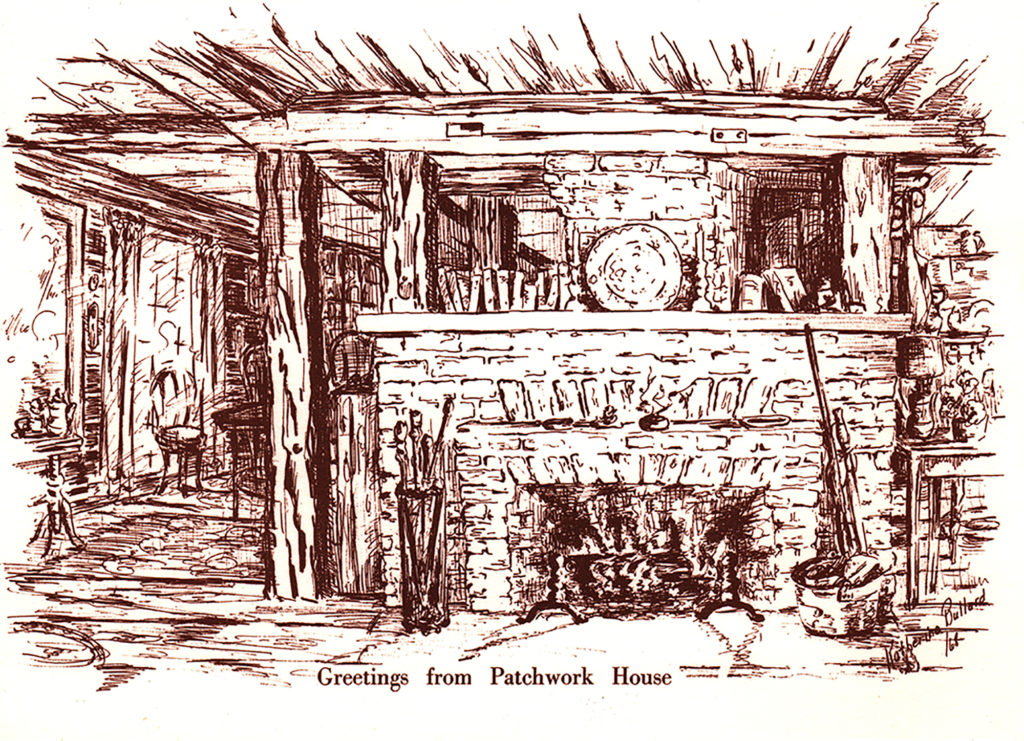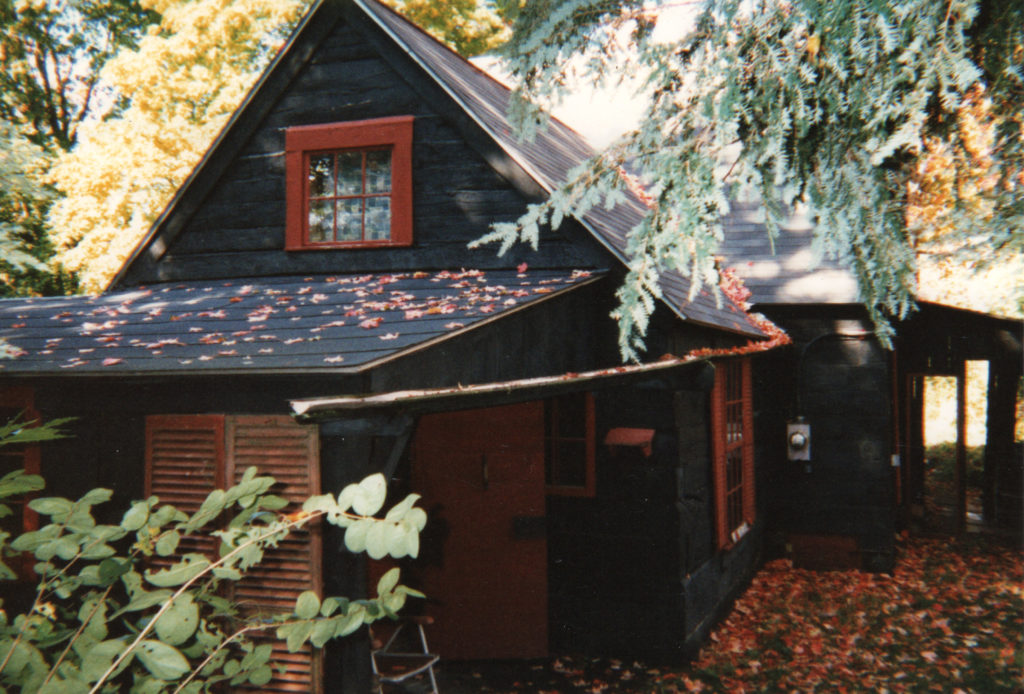Mistaken Identities: Patchwork House
by Tawn Feeney –

This is a true story about a house, not a person, which was mistaken for what it was not for many years. Yes, it is not just people that can be wrongly identified. Objects and animals can be, too, like the cute, little purple and yellow flowers of the deadly night shade that belie their toxicity, or the soap pods that poison children, thinking they are something good to eat. Starting with the apple that Eve bit into, there have been stories about things that weren’t what they seemed. Sometimes in folk tales things turn out happily, such as the frog who was really a prince, and Aladdin’s dusty, old lamp that was the genie’s home. Then there are the darker tales, where the wolf disguised himself as Little Red Riding Hood, and where Hansel and Gretel mistook the witch’s house for a huge cookie and candy treat.
This story is about another house, “Patchwork House,” that had been in our family since about 1950. It is a log cabin in Shelburne Falls, in the scenic Berkshires of western Massachusetts. The cabin was built during the Depression by my grandfather’s cousin, Carl, who lived across the street from the lot on which it was built. The lot was called the “spring lot,” because of the many springs that flowed through it. It had been where the villagers grazed their sheep and goats in the early days of the village’s history. Carl and some friends were often out of work then and needed something to do, even if there was not much to pay them. Carl’s sometime job was to tear down old buildings and bridges. After deconstructing a covered bridge he decided to use the stout timbers to build the cabin with his friends. He found windows from an old tavern that was torn down, so old that the glass was rippled. The front door was over two hundred years old, with its original latch.

The soap stone sink was from a farm house. The list of parts borrowed from the old to build the new cabin was long and fascinating, and was kept framed on a wall of the house. Its name came from its origins, all patch-worked together.
The house first served as a gift shop, then a guest house, and later a play house for the neighborhood kids. When my grandparents needed a place to live, they bought it from Carl, cleaned out the raccoons, squirrels and mice which had taken up residence and turned it into a beautiful, cozy home. Everyone in our family loved visiting there. I have such fond memories of us all driving there every Thanksgiving, to celebrate with Gramma, Grampa and our aunt, uncle and cousins. After my Dad passed away much too early, my Mom moved there with Gramma, as they had been planning to do when Dad retired. We joined Mom many times during the eighteen years she lived there, creating many more happy memories.
By the fall of 2000, it became evident that Mom was coughing a great deal and having difficulty breathing. She had wanted to put the house into her trust that was administered by a local bank. They required a home inspection before agreeing to do so. I happened to be visiting when the inspector checked out the house and reported his findings. I will never forget what he said, “Mrs. Reynolds, you should leave this house immediately.”
He found that there was a spring flowing directly under the house, creating mold in the crawl space. In addition, the old timbers from which the house had been constructed had been treated with creosote, which is toxic. We found out in that awful moment that our dear “Patchwork House,” instead of being the sweet home of our dreams, was an evil edifice that was slowly killing my mother with COPD.
Within the month, Mom moved to Florida to be with my brother and sister-in-law from the late fall through May. She insisted on returning to Patchwork for three summers, spending as much time in the fresh air as possible, and sleeping outside on the screened-in porch, until 2004, when she entered an Assisted Living facility near us. Before she died in 2006, my Mother wanted someone to take over her dear home. We offered it to the Town of Shelburne, but because of its toxicity, the council voted not to accept the offer. When she saw the council’s decision in the local newspaper, Carl’s grand niece, Sarah, contacted us, desiring to buy the house. She knew of its problems, but was determined to correct them. We agreed to let her purchase the house for a minimal amount, for little more than the lot was worth, because we felt that she would probably have to tear it down. Instead, she has spent thousands to rehabilitate the house, first having the spring diverted and a new basement dug out, and having insulation and dry wall placed as a barrier against the logs on the internal walls of the house. My cousins and I met there three summers ago when Sarah agreed to show us what she had accomplished. We were overjoyed with the transformation.
So this story does have a happy ending. “Patchwork House” has now fulfilled its promise to be a welcoming, safe and healthy place to live, after all. Its mistaken identity is no more.
Tawn Feeney grew up in Geneva, and returned to living in the Finger Lakes in 2000, after living many places for almost 40 years. She and her life partner built their home next to their pond on the ridge above Hemlock Lake. She is now a semi-retired speech pathologist and is active in the Little Lakes Community Association. Her heart has always been in the Berkshires of Western Massachusetts as well, where her maternal grandparents had always made their home and where this story takes place.